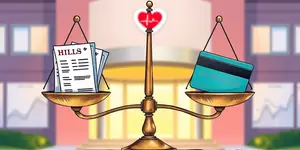
When you receive your monthly credit card statement, you might notice a small number labeled “minimum due.” That tiny figure can feel like a relief—just enough to keep your account in good standing and avoid late fees. However, consistently paying only this amount can set off a prolonged cycle of debt and increasing financial strain. This phenomenon is known as the minimum payment trap, and it affects millions of cardholders by stretching repayment timelines and inflating overall costs.
In this article, we’ll explore how minimum payments are calculated, why they can be so dangerous, and what strategies you can use to escape the trap. With real-world numbers, current statistics, and actionable solutions, you’ll gain the insight and motivation needed to take control of your credit card debt once and for all.
Credit card issuers typically set the minimum payment at either a fixed dollar amount, such as $25 or $35, or a small percentage of your outstanding balance, often between 2% and 4%. This percentage calculation includes any accrued interest and fees for that billing cycle. From a creditor’s perspective, low minimums encourage ongoing balances—and ongoing interest revenue.
For example, imagine you owe $1,000 at a 20% annual interest rate. If your issuer sets your minimum payment at 1% of the balance plus any interest charges, your monthly amount could be just $26.67. Of that figure, only about $10 goes toward reducing the principal; the rest services the interest. This structure ensures the balance diminishes very slowly.
There’s an undeniable psychological appeal to minimum payments. They provide false sense of financial security, giving the impression that your debt is manageable month to month. Many consumers view this option as “safe” because it prevents late fees and preserves their credit score—at least temporarily.
Despite their allure, minimum payments are structured to keep you in debt. Card issuers understand that when you pay mostly interest, your balance remains high, generating further interest in following cycles. Over time, the amount you owe can balloon far beyond your original purchases.
To grasp the true impact, consider that paying only the minimum on a $1,000 balance at 20% APR would stretch out to 117 months—nearly 10 years—and rack up $1,056.74 in interest alone. Even more startling, a balance of $14,718 at a 13.04% APR would take 31 years to pay off if you only meet the minimum requirement. You’d end up paying more than $16,000 in interest—more than the principal itself.
These numbers highlight how total interest costs dramatically over time, turning relatively small purchases into long-term financial burdens. High credit utilization—when balances approach your credit limits—can also high credit utilization can lower your score, further eroding your borrowing power.
Escaping the minimum payment trap requires commitment, planning, and sometimes external help. The key is to shift more of your payment toward principal rather than interest, accelerating your path to debt freedom.
The minimum payment trap thrives on short-term comfort and long-term consequences. By understanding how minimums are calculated and the psychological mechanics at play, you can break free from decades-long repayment cycles. Remember, small portion of your minimum payment goes to principal, and that knowledge alone is powerful. Choose to pay more, adopt a strategic payoff plan, and reclaim control over your finances.
Every extra dollar you apply to your credit card balance chips away at interest, hastens debt elimination, and paves the way toward greater financial freedom. Start today—your future self will thank you.
References













